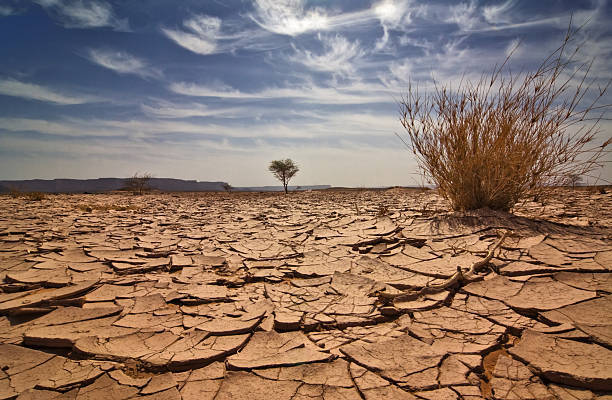- 1-905-452-8193
- Contact Us
- Member Login
- Get Listed Today
- 220,911 members

Experts in tree removal Sydney explain that drought is a period of below-average precipitation in a given region, resulting in prolonged shortages in the water supply. Droughts can last for months or even years and have devastating effects on both the natural environment and the people who depend on it for their livelihoods.
While droughts are often thought of as natural disasters, they are quite common and can occur anywhere in the world. Nearly two-thirds of the Earth's land surface experiences at least one drought every year.
Droughts can have a significant impact on trees. Trees need water to survive, and during periods of drought, they may experience stress due to a lack of moisture. This can lead to several problems, including reduced growth, dieback of leaves and branches, and even death.
The following list explains what trees go through when experiencing a drought.
Trees May Lose Leaves
During a drought, trees may drop their leaves in an attempt to conserve water. This is known as leaf shedding or defoliation. If the drought is severe enough, leaves may drop before they have finished photosynthesizing for the season. This can cause problems for the tree because it will not be able to store enough energy for next year’s growth.
Branch Dieback
Branch dieback is another common problem during a drought. This happens when the tree’s leaves begin to wilt and turn brown. The tree will then shed these leaves in an attempt to conserve water. Branch dieback can also be caused by insect infestations or disease.
Trees May Become Dormant
In extreme cases, trees may enter a state of dormancy to survive a drought. During dormancy, the tree’s growth slows down and it stops producing leaves. The tree will remain in this state until conditions improve and it can start growing again.
Trees May Die
Unfortunately, some trees may not be able to survive a severe drought. If a tree is already stressed by other environmental factors, such as heat or poor soil, it may not be able to withstand the lack of water. Once a tree has died, it will not be able to regenerate.
Insect Infestations
Drought can make trees more susceptible to insect infestations. This is because the insects are attracted to the stressed and weakened trees. In addition, the lack of water can make it difficult for the tree to defend itself against insects. Some common insect pests include aphids, bark beetles, and scale insects.
Disease
Drought can also make trees more susceptible to disease. This is because the lack of water can stress the tree and make it more susceptible to infection. In addition, the dry conditions can also create an environment that is favourable for the growth of fungi and bacteria. Some common diseases that affect trees during a drought include root rot, leaf spot, and powdery mildew.
Soil Erosion
The lack of water can also cause the soil around trees to erode. This is because the roots are not able to anchor the tree as securely in the ground. As a result, the tree may be uprooted by strong winds or heavy rains. Soil erosion can also make it difficult for trees to take up water and nutrients from the soil.
Fires
Fires are a common problem during a drought. This is because the dry conditions make it easier for fires to start and spread. In addition, the lack of water can make it difficult for firefighters to put out the fire.
Flooding
While drought may seem like it would cause flooding, the opposite is true. During a drought, the ground becomes hard and cracked. When it rains, the water is not able to seep into the ground and instead runs off. This can lead to flash flooding which can damage homes and infrastructure.
One of the most important things you can do is to make sure your trees are well-watered. During periods of drought, water your trees deeply and regularly. Deep watering means saturating the ground around the tree so that the roots can access the moisture they need. You should also consider mulching your trees to help retain moisture in the soil.
Another way to protect your trees during a drought is to provide them with supplemental water through irrigation. If you can set up an irrigation system, this can be a lifesaver for your trees during periods of drought. Just be sure not to over-water, as this can also be detrimental to tree health.
For more information on this topic, contact your local arborist for professional advice.
